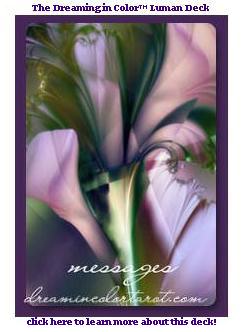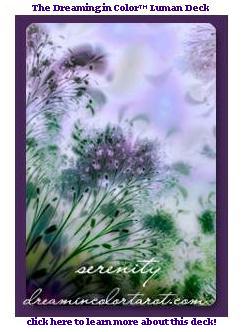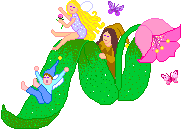Amazing Artemisias
c. 2005 Susun S Weed
Artemis -- Goddess of the herbalist -- gives her name to
a genus of marvelously aromatic, safely psychedelic, highly
medicinal, dazzlingly decorative, and more-or-less edible
plants in the Asteraceae family. I love Artemis, and I love
her plants.
Who is Artemis?
Amazonian moon goddess. Goddess of the hunt. Goddess of
the wild things. Goddess of the midwife. Goddess of the
herbalist. Mother of all Creatures. Leader of the sacred
bitches. Great she-bear. Diana. Selene. Ever Virgin; owned
by no man. We will visit her sacred wood on a shamanic journey.
Who knows what will happen there!
How do Artemisias grow in your garden?
 Most
Artemisias are perennials and grow best from cuttings, not
seeds. Sweet Annie is the exception, being a self-seeding
annual. Although you can buy tarragon seeds, you can't grow
true tarragon from them. Wormwood and southerwood and tarragon
(the last not winter-hardy in many places) are woody perennials
which regreen each year on last year's new wood; I prune
only dead wood from them. Cronewort is an invasive perennial
that creeps underground; it dies back to the ground each
year and can be heavily harveted (clear cuts are ok) without
damage to its further prolific productivity.
Most
Artemisias are perennials and grow best from cuttings, not
seeds. Sweet Annie is the exception, being a self-seeding
annual. Although you can buy tarragon seeds, you can't grow
true tarragon from them. Wormwood and southerwood and tarragon
(the last not winter-hardy in many places) are woody perennials
which regreen each year on last year's new wood; I prune
only dead wood from them. Cronewort is an invasive perennial
that creeps underground; it dies back to the ground each
year and can be heavily harveted (clear cuts are ok) without
damage to its further prolific productivity.
Most Artemisias require little care. Lack of soil nutrients
and lack of water do not faze them. Many are native to deserts,
and know how to thrive in hot dry weather. Except for tarragon,
all can overwinter without fuss.
Flowers are usually small and green, in other words, nearly
invisible.
What do Artemisias contain?
bitter principals: wormwood
coumarins: cronewort, tarragon
essential oils (complex, variety specific, with hundreds
of components per plant): cronewort (high in camphor, thujone),
tarragon, wormwood (high in camphor, thujone)
flavonoids: cronewort, tarragon
glycosides: cronewort, tarragon
hormones: cronewort (sitosterol, stigmasterol)
sesquiterpene lactones: cronewort
How are Artemisias used?
Artemisias, with their grey-green or white-green foliage
bring beauty to the garden throughout the growing season.
They also make long-lasting, aromatic and beautiful indoor
decorations: bouquets, wreaths, swags. They are popular
strewing herbs, too.
Those which are high in essential oils are thereby antibacterial,
antifungal, and antimicrobial. They also improve digestion
and appetite if taken in small doses.
Any Artemisia growing beside the door -- or painted on it
-- was, in days of old, the sign of the midwife, the herbalist.
Magical and folkloric uses are numerous.
"Mugwort possessses both natural and supernatural
qualities. [It] excels as a women's herb, easing the pain
of labor, menstrual cramps, and effectively treating various
uterine complaints."  Gai
Stern (1986)
Gai
Stern (1986)
Cronewort/mugwort = smudge, dream pillow,
moxa, birthing steam, vinegar of roots and young leaves,
salad green when young, mugwort noodles, mugwort mochi.
American colonists used sundried leaves instead of tea.
Formerly a popular beer flavoring (hence "mugwort").
Controls worms in goats. Urinary tonic. Uterine tonic. Digestive
tonic. Nerve tonic. Circulatory tonic.Eases pain and fever,
comforts grief and depression, eases irritability and burdened
joints, brings peace and sleep, and reassures the nerves.
Moxa demonstration/discussion (if time allows).
"That torturous, barbaric practice, the use of
the moxa, is closely related to this plant." Millspaugh
(1892)
Wormwood = tincture, oil. Ingredient in
absinth. Stimulates mid-brain activity and increases creativity,
but repeated use disturbs the central nervous system. Prevents
giardia, dysentery, amoebas. Cholagogic, digestive, appetite-stimulant,
liver-stimulant, wound healer. Caution: Use can lower seizure
threshold; interacts adversely with seizure-reducing medications.
Sweet Annie = capsules, in fairly large
daily dose, to prevent malaria; source of antimalarial drugs.
A strong tea, taken frequently, kills giardia and amoebas.
Tarragon = vinegar, seasoning. Appetite
stimulant according to Herbal PDR.
Southernwood = dream pillow, sachet, charms.
To see the beloved.
Some of the many Artemisia species that herbalists and
gardeners use:
A. abrotanum (southernwood)
A. absinthium (wormwood)
A. afra (African wormwood)
A. annua (sweet Annie, qing hao)
A. camphorata (camphor-scented sothernwood)
A. drancuncula (tarragon, estragon, little dragon)
A. frigida (fringed sagebrush)
A. lactiflora (ghost plant)
A. ludoviciana (silver queen)
A. pontica (Roman wormwood)
A. schmidtiana (silver mound)
A. stellerana (old woman, dusty miller)
A. tridentata (sagebush; three-toothed sagebrush)
A. vulgaris (cronewort, mugwort)




 by
by 

